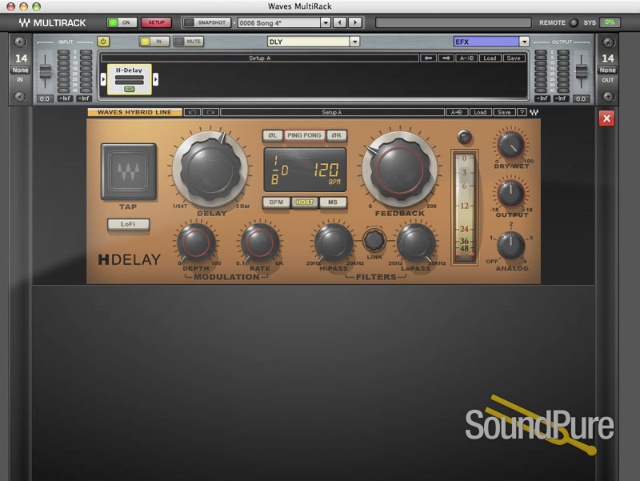
This is the raison d’étre for MultiRack SoundGrid, Waves’ audio network and processing platform. MultiRack Native has certain limitations, namely that CPU horsepower will dictate the number of plugins and system latency.
#WAVE MULTIRACK NATIVE DRIVER#
The Audio Device driver is set to PreSonus FireStudio.
#WAVE MULTIRACK NATIVE PLUS#
Now you have the channel processing from the StudioLive plus the plug-ins patched via MultiRack. The mixer receives its channel signal from the FireWire return, which in this case is the output of the MultiRack, including all of your favourite plugins. What you can’t see is that the StudioLive’s input select switches are set to “D))”, the digital returns via FireWire. The rack is filled with plug-ins for kick, snare, toms, etc.

MultiRack has been set to use the PreSonus FireStudio driver. In the background, you can see a rack that was created for a live show using the StudioLive 16.4.2AI. Take a look at Figure 2, which shows the preferences window of MultiRack. Now here’s a dirty little secret: The 16.4.2AI’s mic inputs always feed the digital direct outputs, even when you set the channel input to digital return or when you mute the channel (though you won’t hear it through the main house mix bus). Take for example the PreSonus StudioLive 16.4.2AI (see the June 2014 issue of Electronic Musician for a complete review): The StudioLive 16.4.2AI features 16 analogue mic inputs, but since it also functions as a multichannel recording interface, it provides 16 digital direct outs and 16 digital returns via FireWire (actually, more, but that’s another story). MultiRack Native can be incorporated much more elegantly when using mixers that also function as audio interfaces. This arrangement enabled us to run our favourite plug-in EQs and compressors on any analogue desk, and believe us some of those older desks had terrible onboard EQ! In Figure 1 you’ll see six of the eight racks used in this configuration, with each rack dedicated to a Traveler I/O. Additional I/Os are assigned in a similar manner.

The Traveler I/Os are routed within MultiRack so that input to rack 1 is fed from Traveler Input 1, and output of rack 1 is fed to Traveler Output 1.

Some analogue consoles actually have separate ¼-inch send and return jacks for the channel inserts, in which case separate cables can be used for input and output.) As far as the console is concerned, the “effect” in this case is the Traveler, but it’s really serving as MultiRack’s A/D and D/A. (Most analogue inserts employ a single TRS connector for send and return, the TRS end of the input cable is plugged into the console and the other end of the cable breaks out to two ¼-inch TS connectors that connect to the input and output of the processor.
#WAVE MULTIRACK NATIVE PATCH#
The Traveler has eight analogue I/Os that can patch into just about any desk. We’ve used MultiRack with a MOTU Traveler audio interface to process input channels on older analogue mixing consoles. Once you’ve got those basics down, it’s all about the application. The open plug-in menu displays available EQs. Each rack has independent audio I/O and plug-ins that are accessed by clicking the + symbol in the rack.

1: Six racks added to a MultiRack session.


 0 kommentar(er)
0 kommentar(er)
